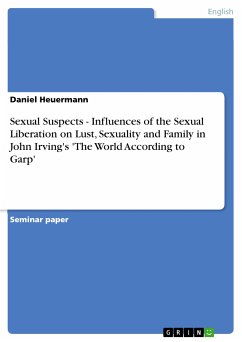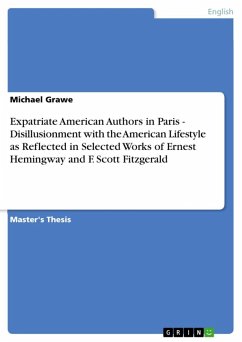Thesis (M.A.) from the year 2002 in the subject English Language and Literature Studies - Literature, grade: 2,0 (B), University of Duisburg-Essen (Literature and Language Studies), language: English, abstract: [...] The above quotations are taken from the three novels to be discussed in this essay, each of which focuses on certain aspects of New York. Manhattan Transfer is certainly more directly connected to the city that ? as the novel seems to convey ? loses its original center while it becomes one in itself than the other two novels, but the events outlined in The Great Gatsby or in The House of Mirth do not just happen to take place in New York or within its upper class society either. In both cases, a clear distinction is made between the geographical setting of the novel and the West: In The House of Mirth, it is Mrs. Norma Hatch, a rich woman from an unnamed location in the West, who is “unplaced”1 in New York’s high society, and in The Great Gatsby, the first-person narrator himself repeatedly contrasts the East with his Midwestern homeland. In both cases, New York was certainly not casually chosen as a counterpart to the more rural West. The whole novels, and not only certain parts of them, are thus 1 Wharton, Edith. The House of Mirth. Harmondsworth: Penguin Books, 1993; p. 273. 3 linked to New York; their “ensemble effects are cumulative.”2 Therefore, an analysis of The House of Mirth and The Great Gatsby oriented on the plotstructure and the respective main character of the novel3 will be given following a short summary and style description. However, there is no actual main character in Manhattan Transfer so that the analysis has to be guided along the principal theme, which seems to be the decentralization of the city and the effect of the same on New York’s inhabitants. My selection seems to favor upper-class backgrounds, leaving out books like Theodore Dreiser’s Sister Carrie or Stephen Crane’s novelette Maggie: A Girl of the Streets, but since Dos Passos’s novel provides a general view of all social classes, I have sought to balance the choice along different lines. Wharton’s The House of Mirth describes the social decline of its main character, while the title character of The Great Gatsby has changed from penniless to extraordinarily rich within just three years. [...] 2 Lopate, Phillip (ed.). Writing New York. New York: Literary Classics of the United States, 1998; p. XXII (introduction by the editor). 3 See Frye, Northrop. Anatomy of Criticism: Four Essays . Princeton: Princeton University Press, 1971.









